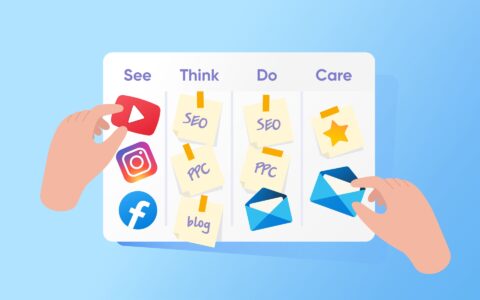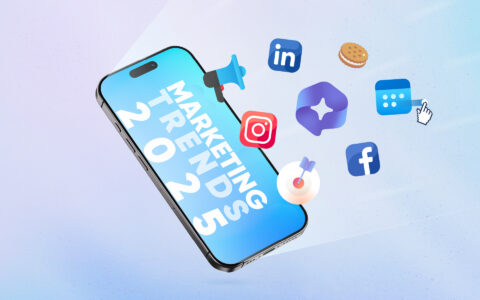Did you know that the average cart abandonment rate is 79.8%? This means that 79.8% of online shoppers abandon their shopping carts before purchasing. A heartbreaking statistic, right? That would be the case if it weren’t for abandoned cart emails.

Cart abandonment offers online businesses an amazing opportunity to win back customers who are already interested in their products or services.
Think of it this way: Cart abandoners have visited and navigated through your website, and your products have piqued their interest enough to add them to their carts. However, they turned away before check-out. The reasons may vary, so it’s time to explain what an abandoned cart email is and why cart abandonment occurs.
Table of contents:
What is an abandoned cart email?
Why do online shoppers abandon their shopping carts?
5 best practices to turn abandoned cart emails into revenue
1. Use an automated email sequence
2. Nail your email subject lines
3. Add social proof elements
4. Use a clear and actionable CTA
5. Offer an incentive
Win back, online shoppers!
What Is an Abandoned Cart Email?
An abandoned cart or cart recovery email is an email sent to re-engage online shoppers who added products to their carts but exited the website without completing the purchase. Brands design such emails to encourage visitors to return to their online store and complete the transaction.
But for cart abandonment messages to work, they have to dig deeper into the reasons why they decided to leave in the first place.

Why Do Online Shoppers Abandon Their Shopping Carts?
The act of consumers leaving their selected products behind can be attributed to several factors. To help you detect potential bottlenecks in your website’s user experience, we compiled a list of the most common reasons behind cart abandonment:
- Technical issues with your site, like slow loading pages, poor mobile experience, or broken links. Ensure you provide users with a seamless experience through regular tests and responsive design.
- Complicated or time-consuming check-out. Consumers hate losing time when buying things online, so opt for a single-page checkout process where visitors can fill in their data and review their purchases all in one place.
- Making it mandatory for them to create an account to complete the purchase. Offering a guest checkout option will remove doubts and facilitate the process.
- Offering inadequate payment options. Users enjoy shopping experiences that meet their needs, and having a convenient payment option is one of the most crucial prerequisites for buying from your site.
- High shipping costs. Shipping costs that exceed a consumer’s expectations are a common reason for cart abandonment. So, even if free shipping is off the table, offer a variety of options such as freight courier and regular shipping, making sure the corresponding fees are displayed on the product landing page.
We have to mention, though, that your website’s UX can’t be blamed for all abandoned carts. Sometimes a buyer is just unready to cross the finish line. It doesn’t make them a lost cause, so perhaps dispatching an abandoned cart email could be all your brand needs to get them back.
5 Best Practices to Turn Abandoned Cart Emails Into Revenue
Once a customer abandons check-out, it’s time to leverage a dedicated message to keep your brand and products top of mind. Firing off cart abandonment emails without a well-thought-out strategy won’t cut it, though. So, let’s go through the best practices to create effective cart recovery emails that get opened.
1. Use an Automated Email Sequence
Email automation is the ultimate tool to keep prospects engaged without wasting extra time and effort. You just need to invest in robust email automation software and set up the automation workflow that best serves your business objectives.
This type of software allows you to create personalized emails and then set them up to be delivered based on specific triggers, like a visitor leaving your website without going through check-out.
Automated abandoned cart emails are a bulletproof way to contact consumers with customized content and push them to reconsider. In cart recovery, timing is everything. Setting up an automation workflow ensures that the right message lands in your recipient’s inbox at the right time without you having to monitor everything.
For instance, the first email is about giving them a gentle nudge and reminding them about the abandoned products. So, including the product image and details in this first email is a no-brainer.
But what about the next emails?
You could send a second email a couple of days later to suggest they finish their purchase or recommend similar products. There’s even the option of throwing in a personalized incentive such as free shipping. Or you could save this tactic for the last email as a last resort in case the previous emails don’t hit a soft spot.

2. Nail Your Email Subject Lines
Email subject lines are the first thing a reader sees when opening your email campaign. As such, it’s probably the most critical element for recipients to open your email, thus directly affecting your open rates. And let’s face it: there’s no point in creating a great abandoned cart email if readers don’t see it.
To create an attention-grabbing email subject line, the first thing you need to do is add personalization elements. These may range from the recipient’s name, the abandoned products, or any type of data that shows readers your brand knows how to address their specific challenges.
Emails with personalized subject lines work wonders for cart abandonment. Using phrases like “ you left something behind” or “we saved X product for you” in your email subject lines could also improve your open rates.
If you want to offer them an exclusive discount or other types of incentive, don’t forget to mention it in your subject line, or else they might never know. Also, your abandoned cart email subject lines should be short and straightforward.
Last but not least, staying true to your brand tone helps prospects recognize your cart recovery email and tie it to your company immediately.
Email subject line: Looking for a sign? Free shipping.

This email subject line by United By Blue is exceptional. It is cutting to the chase while also incentivizing readers to finish the purchase. As mentioned, free shipping is a great way to grab attention. Combine that with engaging and witty copywriting, and what you get is a highly effective cart recovery email.
3. Add Social Proof Elements
If you ask the average consumer, they will confirm that they usually trust companies that feature user-generated content in their marketing efforts. Adding social proof elements to your emails is key to showcasing your company’s credibility. And this is even more true for abandoned cart emails.
A tried and tested strategy that most e-commerce platforms leverage in their abandoned cart emails is highlighting customer reviews and testimonials. You can take it one step further by including star ratings or social media comments.
If you want them to have the entire picture, you can use reviews highlighting your company’s trustworthiness. Seeing that your products or services helped others is the best way for them to realize that they could be the solution to their pain points, too.
Email subject line: Sorry to hear about your Wi-Fi…

Adidas does everything right in this abandoned cart email. The subject line employs humor and evokes curiosity. The email content also features the abandoned product, along with satisfied customer reviews praising it.
4. Use a Clear and Actionable CTA
An effective call-to-action is one of the most critical components of a cart recovery email. It provides recipients with clear instructions about what their next action should be. For this reason, it has to be straightforward.
Go for actionable phrases like “Return to your cart” or “Complete your purchase” that will clearly show where users will be directed by clicking it - and that’s back to their cart. Is your brand tone more playful and conversational? Leverage this kind of language to have fun with your call to action.
Most brands place CTAs high in the email content or center the content around it. Make sure it’s prominently displayed and bold. Also, use color contrast for readers to pick up on it easily.
Email subject line: You forgot something unforgettable.

Winc created an abandoned cart email that is designed to stand out. Every component serves the email objective, which is to direct subscribers back to the shopping cart. Both the email copy and CTA are actionable yet playful and witty while staying true to the brand tone.
In this example, they didn’t limit themselves to adding a single call-to-action. Instead, they repeated the action they expected users to take without coming off as boring or pushy.
5. Offer an Incentive
More often than not, consumers exit an online store because they are hesitant to cross the finish line. That’s why throwing in a compelling incentive could be all it takes for them to overcome initial doubts and convert into paying customers.
Prospective customers think of exclusive offers as an opportunity to act on a unique deal offer they wouldn’t otherwise come across.
When it comes to the incentives you may offer, anything goes - as long as it fits your objective and helps you stick to your budget. Saving your exclusive offer for the second or third email is probably a wise choice to avoid giving away more than necessary.
As a general rule, try not to overdo it. Repeated offers to cart abandoners could bring the opposite results. Visitors always expect an incentive before purchasing.
Let’s review some of the most effective incentives:
- Discount codes. Cost-conscious shoppers love exclusive discounts or limited-time offers. You must use urgent language with this incentive to highlight that users might miss out on it if they don’t act quickly.
- Free shipping. As mentioned above, high shipping fees are among the most common reasons for cart abandonment. Free shipping reduces the overall cost of the order while showcasing that your business is willing to give up something valuable to get users back.
- Who doesn’t love a gift? Consumers are no different, usually enjoying gifts in exchange for finishing their purchase. And trust us when we say that the more exclusive the item, the better.

Win Back, Online Shoppers!
Abandoned cart emails are an excellent opportunity for your business to win back online shoppers. Offer them a personalized experience, with exclusive discounts and product recommendations based on specific data like their browsing history and needs.
Email campaigns enable brands to build trusting relationships with recipients by showing you are willing to go the extra mile for them.
Want to hear the best part? Cart recovery emails could also serve as a tool to explore what could be going wrong with your user experience.











